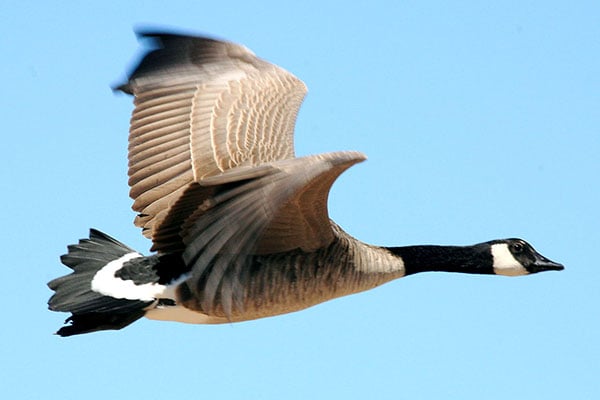
Last Updated on
Canada Geese can provide some of the most exciting and action-packed hunting out there. Learn more about these big game birds and how you can bring some down!
In many areas, the rising Canada Goose populations are becoming a nuisance. However, for hunters in these areas, these enormous flocks bring nothing but excitement and anticipation for the next hunt. The Canada Goose is one of the most well-known and widespread gamebirds throughout North America.
Considering the recent population boom in urban and surburban areas, many people would be surprised to know that, just a few decades ago, many people we’re intentionally reintroducing these birds to maintain stable population levels.
Physical Characteristics
At adulthood, Canada Geese can range from around 25 inches to 45 inches long with a wingspans between 50 and 67 inches. Females typically weigh between 3 and 11 pounds, but males can reach weights of up to 13 pounds. In breeding pairs, the female is usually the smaller of the two. Canada Geese are generally described as large bodied birds with long necks, large webbed-feet, and flattened wide bills.
Both sexes feature a black and neck with white cheek patches that start behind each eye and extend underneath the throat. Breast, flank and abdomen colorations vary from light grays to dark chocolate browns. The birds’ scapulars and backs are typically a darker shade of brown, while their rumps and tails are black or blackish-brown. A white, U-shaped band creates a distinctive marking on the rump. Canada Geese have black feet, legs and bills.
General Behaviors and Breeding
Canada Geese eat mainly grasses, grains and seeds. In the spring and summer seasons, they concentrate more on grasses and leaves. In the fall and winter, feeding is more focused on agricultural grains, seeds and berries. They also dabble some in shallow water by tipping their bodies forward and extending their long necks under the water’s surface.
Throughout most of the year, Canada Geese congregate in large flocks. In many cases, the majority of the birds in these flocks are related to each other in some way. The geese are well known for their life-long breeding behaviors. Once a mature male and female pair together, they almost always remain together for the rest of their lives. When pairing, larger birds typically choose larger mates and the smaller ones choose smaller mates.
Spring marks the only time when breeding pairs break away from the large flocks to nest. The pairs will defend their nesting territories, but population density can result in several nests within view of one another. The geese threaten intruders by pumping their heads, opening their bills, hissing, honking and vibrating the feathers in their necks. If the threat fails, a defensive goose may bite at the other’s throat or breast and hit the intruder with his wings. In some cases, these fights result in significant injuries.
After hatching, goslings quickly begin pecking at small objects. They spend most of their time feeding and sleeping. Typically, the young birds remain close to their parents for the first year. As summer sets in, Canada Geese return back to large groups to feed.
Canada Geese Subspecies
Seven primary subspecies of Canada Geese are recognized: Vancouver, Dusky, Lesser, Great Basin (Moffitt’s), Giant, Atlantic and Hudson Bay. The subspecies who nest farther north are relatively smaller in size, while those that nest farther west are often darker in color. The Giant Canada goose can weigh over 20 pounds and represents the largest goose in the world. It can be very difficult to identify the different subspecies of Canada Geese, and Cackling Geese are also commonly misidentified for Canada Geese.
Wintering Grounds and Migrations
Atlantic: breed in Northern Quebec, Newfoundland and Labrador – winter in the Delmarva Peninsula and throughout New England
Hudson Bay: breed on Akimiski Island, in Eastern Saskatchewan and Northern Ontario to the Hudson Bay and James Bay – winter in Southern Ontario south through the great plains to Alabama, Georgia, and Texas
Giant: breed in many of the same areas as the Hudson Bay subspecies but also breed in Eastern Montana, Wyoming and Colorado – winter in same areas as the Hudson Bay subspecies
Great Basin: also breed in similar areas as the Hudson Bay and Giant subspecies; however, some families breed in inter-mountain regions throughout Utah, Idaho, Nevada, Wyoming, Colorado and Montana – Winter throughout Southern Ontario and the great plains to the central and southern United States
Lesser: breed in the far northern reaches of Canada such as the Baffin, Jenny Lind and King William Islands to parts of the Hudson Bay and Northern Alberta – winter in Southeast Colorado, Oklahoma, Texas and Northeast Mexico
Dusky: breed only in the Copper River Delta of Southeastern Alaska – winter in the Willamette and Lower Columbia River Valleys in Oregon and Washington
Vancouver: breed along the coast of British Columbia and Southeast Alaska – may winter in these areas or in Oregon and Washington
Populations
Generally, Canada Geese populations are more stable than they have been in many years. Giant Canada Geese averaged an increase of about 3 percent every year from 1998 to 2007 and now have become almost too successful in some areas. In 2007, an estimated 1.64 million Giant Canada Geese traveled along the Mississippi Flyway.
In the United States, there are believed to be over 3 million resident Canada Geese populations. However, some subspecies such as Dusky Canada Geese, may have population levels lower than 10,000 total birds. In 2007, population estimates were at 1.38 million for the Atlantic subspecies and just over 960,000 for the Hudson Bay subspecies.
Quick Hunting Tips for Canada Geese
Your local game warden can be an excellent source of information when it comes to Canada Geese. He or she may know of depredation problem areas and, although the game warden may not be authorized to provide names and contact information for property owners with these problems, he or she can probably help you find the right farmers who need to decrease grain-hungry geese populations.
One of the most common mistakes of goose hunters is placing decoys too close together. The fact is, Canada Geese are large when it comes to game birds, and they need space to move and land. Start taking at least two large steps between placing your decoys. You will be surprised to see how much it will improve your results.
Finding a group of fellow goose hunters in your area is always a good idea. Together, you can find more properties to hunt, scout for the best spots and consolidate hunting gear. You can pool your resources to buy more decoys, better field blinds and other gear, or even to sign a small lease for the group. Not to mention, the hunting is just more fun with a good group of friends.
Goose hunting, especially in fields, is all about wind direction. Canada Geese will almost always approach your decoy spread into the wind. Your decoy pattern should reflect the wind direction and give the geese a good point of approach and landing area. Put your blind in a position so that you will be shooting with the wind at your back.
For duck hunters that are fairly new to goose hunting, it can be easy to use the wrong shot load. You should really be using BB or BBB shot only for Canada Geese. Also, you should keep all your shots at a distance of 40 yards or less.
Cold weather changes how geese behave. Early on in the season, they will fly from field to field with little urgency on feeding. However, when the mercury drops, they will have to work harder to find food and will worry less about predators. Many will head closer to town to find open water and agricultural fields.
Gear and Equipment for Canada Geese
The behaviors of Canada Geese, as well as the places best for hunting them, play a major role in the different types of gear you need for a successful hunt. Decoys may be the most important, and many times the most costly, part of your necessary gear for hunting these birds. The decoys come in a variety of different styles from full-bodied and shell decoys to floaters, silhouettes, and even motion decoys. Although small spreads can work well during the early season in some areas, large spreads with many dozens of decoys often works best. Spacing and placement according to wind direction are the two most important factors when setting your spread.
To become a great goose hunter, you have to learn to become a great caller. When it comes to goose calls, there are many available. However, you should make sure you buy one that is specific to Canada Geese. Listen to wild birds, get an instructional DVD or CD, and practice your calls as much as possible. If you’re not confident in your calling skills when the season opens, don’t try to call in the field. A bad call will only chase the geese farther away.
Your shot loads and choke sizes are also critical for a successful Canada Goose hunt. Size 1, BB, BBB, and T steel shot loads are recommended, but BB and BBB are the most common and effective in the majority of shooting scenarios. Steel shot is important because it generally holds a tighter pattern than lead. Modified and Improved Modified chokes are best for Canada Geese. No matter what choke and load you choose, you should always pattern your gun before hitting the fields.
Although elaborate blinds have become quite common among goose hunters, well-blended camouflage clothing and a makeshift blind made from surrounding material will do the job.


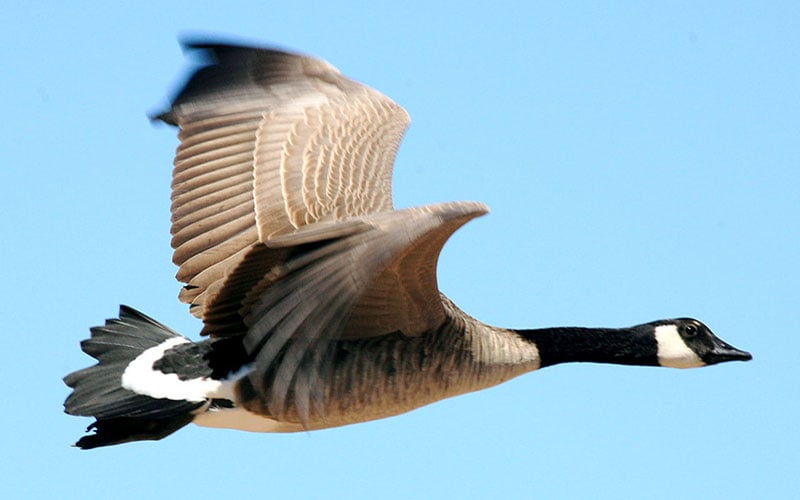
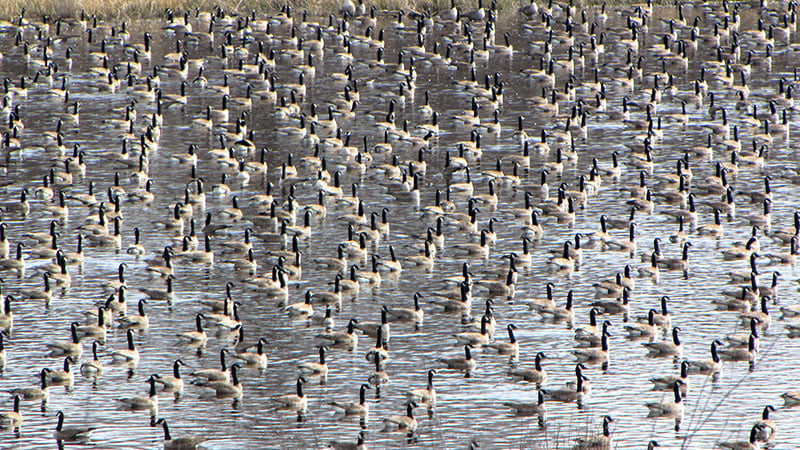
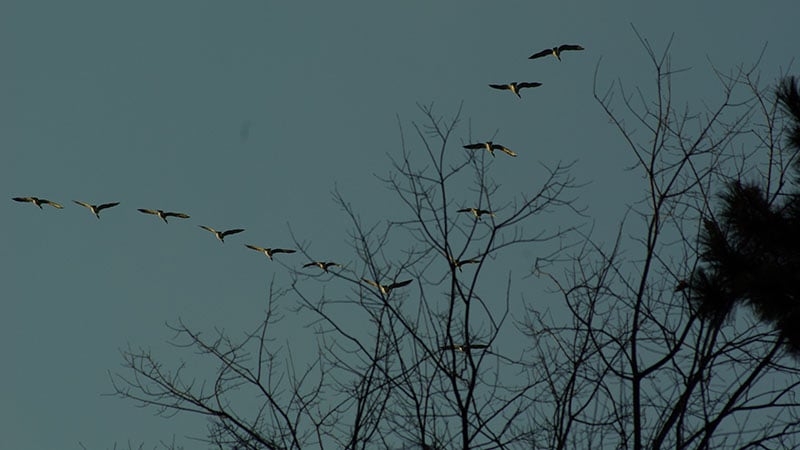
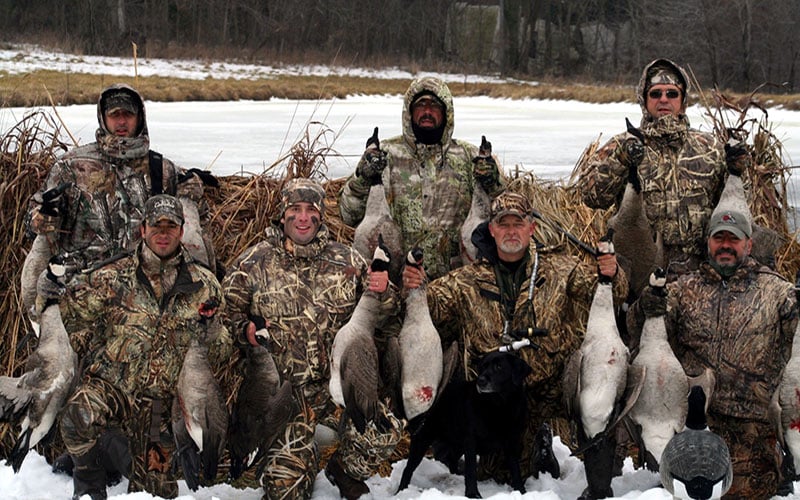



Leave a Reply